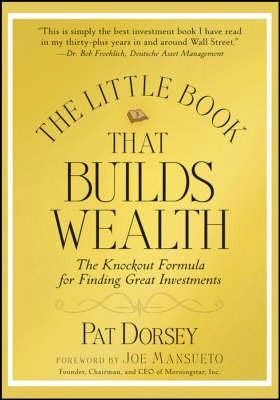Recently I went back and re-read The Little Book That Builds Wealth, by former Morningstar Director of Equity Research, Pat Dorsey. It remains one of the more concise and enlightening books for investors looking for great businesses that stand the test of time – historically, the kind of investments that return their worth many times over.
Although the book is nearing 10 years old now, the principles are still highly relevant. In this article, we will go over the main points of the book and why it is worth reading for any investor.

Dorsey’s 4 Economic Moats
The Little Book That Builds Wealth is all about one principle – determining a company’s economic moat. This is an important concept, as a moat protects a company’s profits from competition and allows the company to earn exceptional returns on capital over long periods of time. Businesses that earn high returns on capital invariably attract lots of competition. Companies with no moat can see their profit margins and sales growth dwindle as competitors capture more and more of their market share. On the other hand, wide moat companies have advantages that make it very difficult or uneconomical for competitors to try and compete with them.
The concept of a moat has been one of the keys behind the success of the world’s most recognized investor, Warren Buffett.
Dorsey lays out 4 main ways a company can establish an economic moat (or durable competitive advantage, as Buffett would say). The first method is by intangible assets. Examples of this are a strong brand that allows a business to charge more for comparable items, patent protection on products like drug formulations and technologies, and regulatory licenses that are particularly hard to obtain.
The second method is by having high switching costs – the “sticky” customer advantage. Here, Dorsey presents banks and widely adopted software vendors as having high switching costs. Who wants to go through the hassle of transferring an account or training an entire staff on a new piece of software?













Leave A Comment